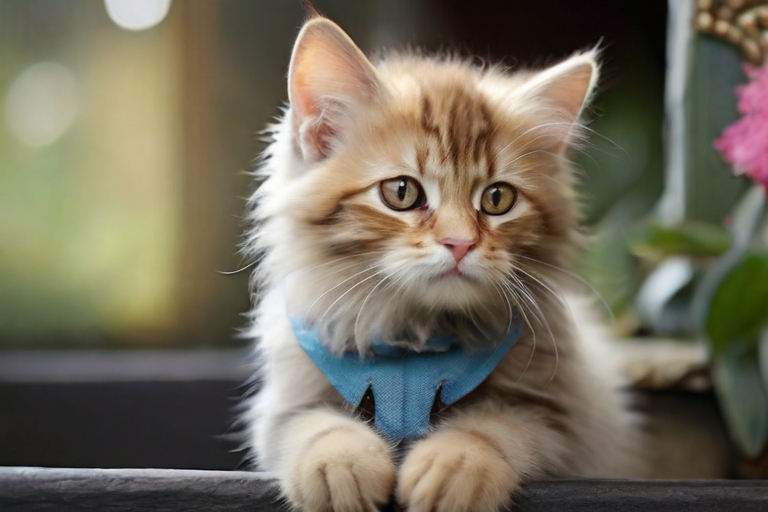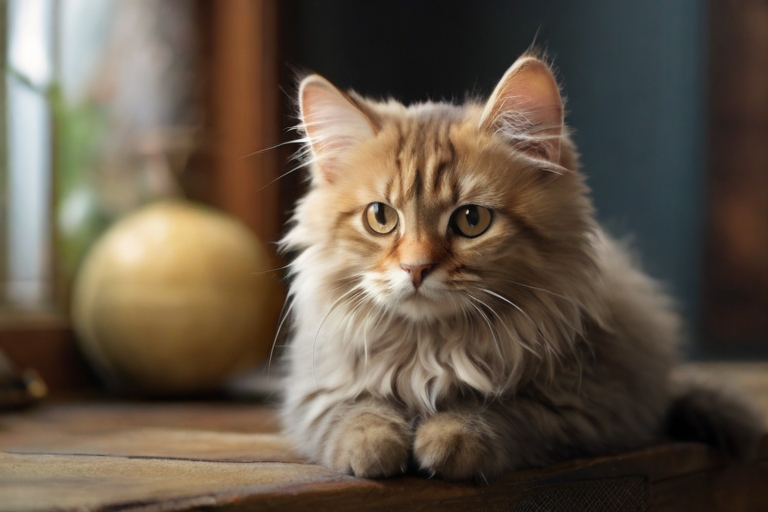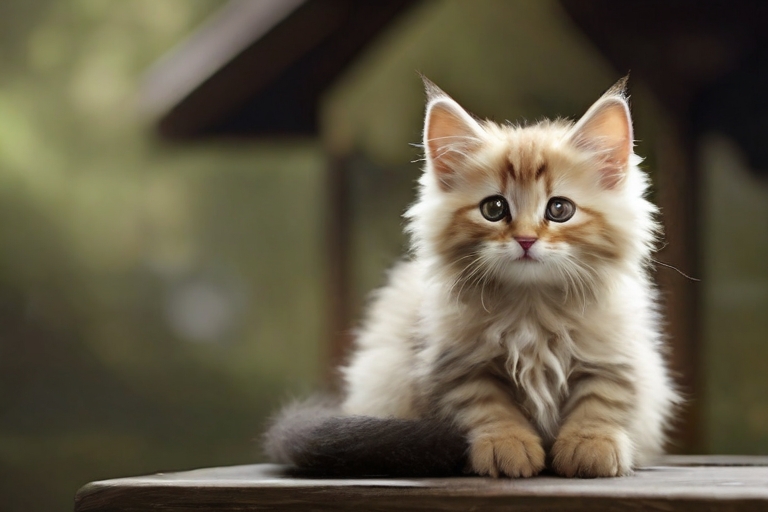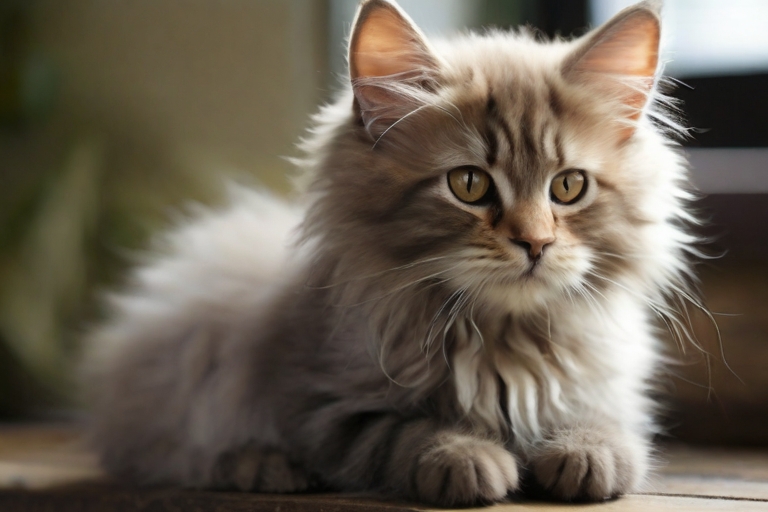How to Choose the Right Cat Breed for You Choosing the perfect cat breed that fits your lifestyle is an important decision that requires careful consideration. Whether you’re a first-time cat owner or looking for a new feline companion, understanding your needs and preferences is crucial in finding the right match. In this article, we will explore the key factors to consider when selecting a cat breed, ensuring a harmonious and fulfilling relationship for both you and your feline friend.
Table of Contents
Key Takeaways:
- Assess your lifestyle, needs, and preferences before choosing a cat breed.
- Consider the energy levels and activity requirements of different cat breeds.
- Take into account the grooming needs and coat care required for each breed.
- If you or someone in your household has allergies, explore hypoallergenic breeds or those with lower allergen levels.
- Ensure the living space and environment are suitable for the breed’s adaptability.
Understanding Your Lifestyle and Needs
Before selecting a cat breed, it’s crucial to assess your lifestyle and individual needs. Understanding what you’re looking for in a feline companion will help ensure a harmonious relationship. Here are some factors to consider:
Your Lifestyle:
Take a close look at your daily routine. Are you an active person who enjoys spending time outdoors and engaging in physical activities? Or do you prefer a more relaxed lifestyle, with plenty of quiet evenings at home? The energy level and activity requirements of your cat should match your own to create a balanced and fulfilling lifestyle for both of you.
Your Living Space:
Consider the size of your living space. Do you live in a small apartment or a spacious house with a garden? Some cat breeds are more adaptable to smaller living spaces, while others require more room to roam. It’s important to choose a breed that can thrive in your specific environment.
Your Allergies and Sensitivities:
If you or someone in your household has allergies or sensitivities to cats, it’s crucial to select a hypoallergenic breed or one with lower allergen levels. This will minimize any potential health issues or discomfort for you or your family members.
Your Commitment to Grooming:
Consider the amount of time and effort you can dedicate to grooming and maintaining your cat’s coat. Some breeds require regular brushing and grooming to prevent matting and keep their coat healthy, while others have lower maintenance needs.
Your Expectations for Temperament:
Think about the kind of personality traits you are looking for in a cat. Are you seeking a sociable and affectionate companion, or do you prefer a more independent and aloof cat? Different breeds have distinct temperament traits, and finding a cat that aligns with your expectations is essential for a fulfilling relationship.
“Understanding your lifestyle and needs is the foundation for choosing the perfect cat breed that will be the best fit for you. Take the time to evaluate these factors, as they will greatly contribute to a harmonious and happy life with your feline companion.”

Considering Energy Levels and Activity
When choosing a cat breed, it’s essential to consider the energy levels and activity needs of different breeds. Some cats are naturally more active and require regular physical and mental stimulation, while others are more laid-back and enjoy a quieter lifestyle.
Matching your activity level to a cat’s energy level is crucial for creating a harmonious relationship. If you’re an active individual or a family with children who love to play, a high-energy cat breed may be a perfect fit. These breeds thrive on interactive playtime sessions and will keep you entertained with their lively antics.
On the other hand, if you prefer a more relaxed and low-key lifestyle, a cat breed with a calmer disposition and moderate energy levels would be a better match. These breeds are content with a cozy spot by your side, enjoying the occasional play session but not requiring constant stimulation.
To help you understand the energy levels and activity needs of different cat breeds, here are some examples:
| Breed | Energy Level | Activity Needs |
|---|---|---|
| Maine Coon | High | Requires daily play sessions and interactive toys. |
| Persian | Low | Enjoys a calm and relaxed environment, regular grooming sessions. |
| Bengal | High | Needs plenty of physical exercise and mental stimulation. |
| Ragdoll | Medium | Enjoys interactive play sessions and relaxed cuddle time. |
Remember, choosing a cat breed with compatible energy levels and activity needs will contribute to a happier and more fulfilling relationship for both you and your feline companion.
Grooming and Coat Care
When selecting a cat breed, it’s essential to consider the grooming needs and coat care requirements of different breeds. Some cats have low-maintenance coats that only require occasional brushing, while others have long, luxurious coats that need regular grooming to prevent matting and tangles.
Understanding the time and effort you can dedicate to grooming will help you choose a breed that aligns with your preferences and lifestyle. If you have limited time to devote to grooming, it’s best to opt for a cat breed with a short coat that requires minimal maintenance.
“Grooming and coat care play a vital role in keeping your cat healthy and comfortable.”
On the other hand, if you enjoy the grooming process and are willing to invest time into it, consider breeds with longer or double coats that require regular brushing and occasional bathing.
Grooming and coat care not only keep your cat looking their best, but it also promotes their overall health and well-being. Regular grooming sessions allow you to check for any abnormalities or skin issues, preventing potential health problems from going unnoticed.
Grooming Tips for Different Coat Types
Here are grooming tips for different cat coat types:
- Short Coat: Cats with short coats, like the Maine Coon, typically require minimal brushing. A quick weekly brushing will help remove loose hair and keep their coat looking glossy.
- Long Coat: Breeds such as the Ragdoll have longer, flowing coats that require more attention. Daily brushing is recommended to prevent mats and tangles. Consider using a grooming tool like a slicker brush or comb to keep their coat in top condition.
- Curly Coat: Breeds like the Sphynx have unique coat characteristics that require special care. While they may not have fur, they still need regular bathing to remove oils and debris from their skin. Additionally, be sure to keep their nails trimmed and ears cleaned.
Remember, every cat is unique, and their grooming needs may vary even within the same breed. Regular grooming sessions not only keep your cat looking their best but also strengthen the bond between you and your feline friend.
Grooming and Coat Care Checklist
Use this checklist to ensure you’re providing the best grooming and coat care for your cat:
- Brush your cat regularly to remove loose hair and prevent matting.
- Check your cat’s ears for any signs of infection or dirt buildup and clean them accordingly.
- Trim your cat’s nails regularly to prevent overgrowth and discomfort.
- Bathe your cat when necessary, using cat-specific shampoos and products.
- Monitor your cat’s skin for any abnormalities, such as redness or sores, and consult a veterinarian if you notice any issues.
By understanding the grooming and coat care needs of different cat breeds, you can select a cat that fits seamlessly into your daily grooming routine. Remember, grooming is not only beneficial for your cat’s physical well-being but also provides an opportunity for you to bond and spend quality time together.

Assessing Allergies and Sensitivities
If you or someone in your household has allergies or sensitivities to cats, it’s essential to consider hypoallergenic breeds or those with lower allergen levels. Allergies and sensitivities can cause discomfort and health issues, so finding a cat breed that minimizes these reactions is crucial for a harmonious living environment.
When it comes to allergies, the main culprit is a protein called Fel d 1, which is found in a cat’s saliva, urine, and skin glands. While no cat breed is completely hypoallergenic, certain breeds have lower levels of Fel d 1 allergen, making them more suitable for individuals with allergies or sensitivities.
Here are some cat breeds that are generally considered hypoallergenic or have lower allergen levels:
| Breed | Allergen Level |
|---|---|
| Siberian | Low |
| Balinese | Low |
| Russian Blue | Low |
| Sphynx | Low |
| Ragdoll | Low |
| Devon Rex | Low |
| Cornish Rex | Low |
| Siamese | Low to moderate |
Please note that individual reactions can vary, and it’s essential to spend time with a specific breed before making a decision. Always consult with your healthcare provider or allergist for personalized advice.
While hypoallergenic breeds are a great option for allergy sufferers, it’s also worth considering other factors such as grooming needs, temperament, and compatibility with your lifestyle. Remember to prioritize your wellbeing and choose a cat breed that not only minimizes allergies but also brings you joy and companionship.
Considering Living Space and Environment
When choosing a cat breed, it’s important to take into consideration your living space and the environment in which you reside. Cats have different needs and adaptability levels, so finding a breed that thrives in your particular living situation will ensure a harmonious and happy relationship.
If you live in a small apartment or have limited indoor space, it’s essential to choose a cat breed that is well-suited to a smaller living environment. These breeds tend to be more adaptable, require less exercise space, and are generally content with indoor living.
Examples of cat breeds that adapt well to smaller living spaces:
- British Shorthair
- Ragdoll
- Scottish Fold
On the other hand, if you have a spacious house or access to outdoor areas, you may consider cat breeds that enjoy exploring and have higher energy levels. These breeds thrive in environments where they can roam freely and have space to explore and play.
Examples of cat breeds that thrive in larger living spaces:
- Maine Coon
- Bengal
- Siberian
It’s important to note that while certain breeds may be better suited to specific living spaces, each cat is unique and can adapt to their environment with proper care and enrichment. Regardless of the breed, all cats require mental stimulation, regular exercise, and a safe environment to thrive.
“Creating an enriching environment for your cat is crucial to their overall well-being. Whether you have a small apartment or a spacious house, make sure to provide them with scratching posts, interactive toys, and vertical spaces to climb. This will help fulfill their natural instincts and keep them happy and content.”
By considering your living space and environment when choosing a cat breed, you can ensure a comfortable and fulfilling life for your feline companion.
| Cat Breed | Living Space Adaptability | Exercise Needs |
|---|---|---|
| British Shorthair | Adapts well to smaller living spaces | Moderate exercise needs |
| Ragdoll | Adapts well to smaller living spaces | Low exercise needs |
| Scottish Fold | Adapts well to smaller living spaces | Low exercise needs |
| Maine Coon | Thrives in larger living spaces | High exercise needs |
| Bengal | Thrives in larger living spaces | High exercise needs |
| Siberian | Thrives in larger living spaces | Moderate exercise needs |
Temperament and Personality Traits
When choosing the purrfect cat breed for your home, it’s important to consider the temperament and personality traits of each breed. Just like humans, cats have unique personalities that can greatly impact their compatibility with your lifestyle and expectations.
Understanding the temperament of a cat breed allows you to make an informed decision and find a feline companion that aligns with your preferences. Some breeds are known for being independent and low-maintenance, while others are outgoing and crave constant attention.
If you lead a busy lifestyle and prefer a more independent cat, a breed like the British Shorthair or the Maine Coon may be a great choice. These breeds are known for their laid-back demeanor and ability to entertain themselves.
On the other hand, if you’re seeking an extroverted and affectionate companion that loves interactive play, breeds like the Siamese or the Abyssinian might be a better fit. These breeds thrive on social interaction and enjoy being the center of attention.
It’s important to note that individual cats within the same breed can vary in temperament, just like humans. However, understanding the general tendencies of a breed can provide a good indication of what to expect.
“The Ragdoll breed is known for its gentle and docile nature. They are often referred to as ‘puppy cats’ because of their friendly and easygoing personalities.”
When considering a cat breed, it’s also crucial to assess how their personality traits will blend with your household dynamics. If you have children or other pets, choosing a breed that is known for being tolerant and patient, such as the Ragdoll or the Birman, can ensure a harmonious living environment.
Below is a table highlighting the temperaments and personality traits of some popular cat breeds:
| Breed | Temperament | Personality Traits |
|---|---|---|
| Maine Coon | Friendly, sociable | Intelligent, playful |
| Siamese | Extroverted, vocal | Affectionate, curious |
| Persian | Quiet, calm | Gentle, relaxed |
| Scottish Fold | Sweet, adaptable | Easygoing, loyal |
Keep in mind that this table represents general tendencies of these breeds and individual cats may deviate from these stereotypes.
It’s essential to spend time with the cat before making a final decision, observing their behavior and interactions to ensure a good match. Additionally, providing a loving and nurturing home environment can greatly influence a cat’s temperament and overall happiness.
Lifespan and Health Considerations

When choosing a cat breed, it’s essential to consider the lifespan and potential health issues that may arise. Understanding these factors will help you make an informed decision and ensure the long-term well-being of your feline companion.
Lifespan
The average lifespan of a cat varies depending on several factors, including genetics, diet, and overall care. While most domestic cats can live anywhere between 12 to 16 years, some breeds have a reputation for living longer.
Here are some cat breeds known for their extended lifespans:
- Ragdoll: These gentle giants have an average lifespan of 12 to 17 years.
- Siamese: Siamese cats can live between 15 to 20 years with proper care.
- Burmese: With a lifespan of 16 to 18 years, Burmese cats are known for their affectionate nature.
Health Considerations
Just like humans, cats can experience certain health issues unique to their breeds. It’s important to be aware of these potential risks and take the necessary precautions to ensure your cat’s well-being.
| Breed | Common Health Issues |
|---|---|
| Persian | Respiratory and eye problems, kidney disease |
| Sphynx | Skin issues, hypertrophic cardiomyopathy |
| Maine Coon | Hypertrophic cardiomyopathy, hip dysplasia |
| Bengal | Progressive retinal atrophy, heart disease |
It’s crucial to consider these health considerations and discuss them with reputable breeders or veterinarians before choosing a specific breed.
“Understanding the potential health issues of different cat breeds is essential for providing the best care and ensuring a happy, healthy life for your feline companion.”
By taking the lifespan and health considerations into account, you can choose a cat breed that fits well with your lifestyle and provides you and your furry friend with years of joy and companionship.
Researching and Gathering Information
When it comes to choosing the perfect cat breed for you, thorough researching and gathering information play a crucial role. By exploring the characteristics, needs, and traits of different breeds, you can make an informed decision that aligns with your lifestyle and preferences.
Here are some steps to help you in your researching and information-gathering process:
- Start with Online Resources: Utilize reputable websites, blogs, and forums dedicated to cat breeds. These resources provide valuable insights, breed profiles, and user experiences that can give you a better understanding of each breed’s characteristics.
- Consult with Breeders: Reach out to experienced cat breeders to acquire first-hand knowledge about specific breeds. They can provide detailed information about temperament, health issues, grooming requirements, and more.
- Interact with Cat Enthusiasts: Join online communities or local cat clubs where you can connect with cat owners and enthusiasts. Engaging in discussions and asking questions can provide you with real-life experiences and recommendations.
- Attend Cat Shows or Events: Cat shows and events are great opportunities to observe different breeds up close and speak directly with owners and breeders. This firsthand experience can help you assess a breed’s personality and physical characteristics.
Remember, researching and gathering information is an ongoing process. Take your time to collect as much relevant data as possible before making your final decision.
Research is the key to a successful cat breed selection. By gathering information and understanding the unique qualities of each breed, you can choose a feline companion that fits perfectly into your life. Don’t rush the process – enjoy the journey of learning about different breeds!
Interacting with Potential Breeds
Once you have narrowed down your options, it’s time to start interacting with potential cat breeds to assess their compatibility with your lifestyle and personality. This step is crucial to ensure a harmonious and fulfilling relationship with your feline companion. Here are some tips to guide you in your interactions:
- Observe and Assess: Spend time observing how each cat breed interacts with other animals, humans, and its surroundings. Notice their energy levels, playfulness, and sociability. Are they outgoing, reserved, or a mix of both?
- Physical Contact: Interact with the cats through gentle touch and petting. Observe their reactions and body language. Do they enjoy being touched, or do they quickly become stressed or agitated?
- Playtime: Engage in interactive play sessions with each breed, using toys or objects that simulate hunting and chasing behaviors. Pay attention to their level of interest and enthusiasm. Are they active and eager to play, or do they prefer a more relaxed and independent playstyle?
- Temperament: Interact with the cats in different environments and situations. Observe how they respond to changes, noises, and unfamiliar people. Are they calm and adaptable, or do they easily get overwhelmed or anxious?
Remember that each cat has a unique personality, and individual differences exist even within the same breed. Trust your instincts and pay attention to your own feelings and comfort level during interactions.
Quote: “Interacting with potential cat breeds allows you to experience their behavior firsthand, enabling you to make a more informed decision when choosing your purr-fect companion.” – Cat Lover Magazine
By engaging with potential breeds in a variety of ways, you will gain valuable insights into their behavior, preferences, and compatibility with your lifestyle. This interactive process will help you make an informed decision and find the cat breed that best suits your needs and personality.
| Breed | Energy Level | Sociability | Playfulness |
|---|---|---|---|
| Maine Coon | High | Very sociable | Highly playful |
| Persian | Low | Reserved | Low playfulness |
| Sphynx | Medium | Highly sociable | Moderate playfulness |
Note: The table above provides a summary of energy levels, sociability, and playfulness for three popular cat breeds. Remember that individual cats may vary within each breed.
Conclusion How to Choose the Right Cat Breed for You
In conclusion, finding the perfect cat breed for you is an important decision that should be based on your unique lifestyle, needs, and preferences. By considering factors such as energy levels, grooming requirements, allergies, living space, temperament, and health considerations, you can ensure a harmonious and fulfilling relationship with your feline companion.
It’s crucial to research and gather information about different cat breeds to make an informed decision. Take the time to interact with potential breeds and observe their behavior, as this will give you a better idea of their compatibility with your lifestyle.
Remember, there is no one-size-fits-all approach when it comes to choosing a cat breed. Take into account your daily routine, the amount of time you can dedicate to grooming and playtime, and any specific health concerns you may have. By considering all these factors, you can find the purr-fect match that will bring joy and companionship to your life for years to come.
FAQ
How do I choose the right cat breed for me?
When choosing a cat breed, it’s important to consider factors such as your lifestyle, energy levels, grooming preferences, allergies, living space, and desired temperament. Assessing these aspects will help you find a cat breed that suits you perfectly.
How do I assess my lifestyle and needs?
To assess your lifestyle and needs, think about your daily routine, activity level, and the amount of time you can dedicate to your cat. Additionally, consider whether you have any specific preferences or requirements when it comes to a cat’s grooming needs, energy levels, and temperament.
What should I consider regarding energy levels and activity?
Matching your activity level to a cat’s energy level is crucial for a harmonious relationship. Some cat breeds are highly active and need regular physical and mental stimulation, while others are more laid-back. Consider whether you can provide the necessary stimulation for your chosen breed.
How do I handle grooming and coat care?
Different cat breeds have varying grooming needs. Some breeds require daily brushing and regular grooming sessions, while others have low-maintenance coats. It’s essential to choose a breed that aligns with the amount of time and effort you can dedicate to grooming and maintaining their coat.
What should I do if I have allergies or sensitivities?
If you or someone in your household has allergies or sensitivities to cats, consider hypoallergenic breeds or those with lower allergen levels. These breeds typically produce fewer allergens and are generally more suitable for individuals with allergies.
How do I consider my living space and environment?
Your living space and environment play a significant role in determining the most suitable cat breed for you. Some breeds adapt better to smaller apartments, while others require more space to roam. Consider the size of your living space and any environmental restrictions or hazards.
What should I know about temperament and personality traits?
Every cat breed has its unique temperament and personality traits. Some breeds are more social and outgoing, while others are more independent and reserved. Understanding the characteristics of different breeds will ensure that your chosen breed aligns with your expectations and lifestyle preferences.
What should I consider regarding lifespan and health?
It’s important to be aware of the potential health issues that commonly affect different cat breeds and their average lifespan. Some breeds are more prone to certain health conditions, and it’s essential to consider any potential long-term healthcare needs when choosing a breed.
How do I research and gather information about cat breeds?
To make an informed decision, thoroughly research and gather information about different cat breeds. Utilize reputable sources such as breed-specific websites, books, and consult with veterinarians or experienced cat owners. Having a good understanding of a breed’s characteristics and requirements will help you make the best choice.
How do I interact with potential cat breeds before choosing one?
Interacting with potential cat breeds is crucial to assess their compatibility with your lifestyle and personality. Spend time observing the cat’s behavior, ask questions about their history and personality, and engage in play or petting sessions to gauge their response. This hands-on experience will give you a better sense of which breed is the right fit for you.


